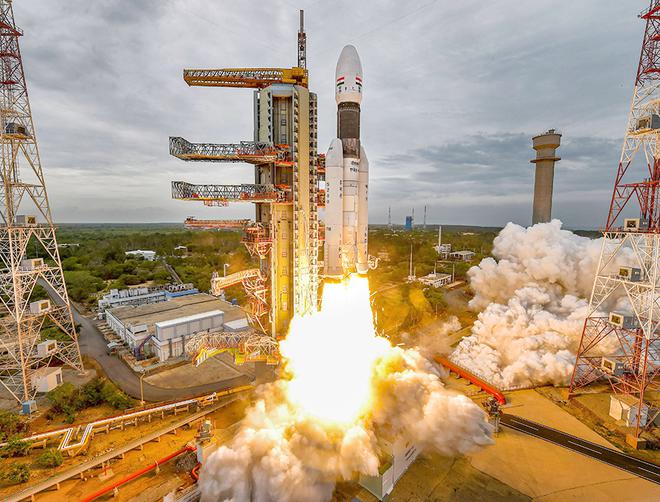According to the Indian Space Research Organisation (ISRO), the Large Area Soft X-ray Spectrometer (CLASS), a payload on board the Chandrayaan-2 Orbiter, has discovered solar proton events that considerably increase the radiation exposure to humans in space.
On January 18, the device also detected coronal mass ejections (CMEs), a tremendous torrent of ionised material and magnetic fields that reach Earth a few days later, causing geomagnetic storms and auroras in the polar sky, according to the ISRO. “Such multi-point observations enhance in our understanding of propagation and its impact on many planetary systems,” the paper stated. Solar flares are dramatic explosions that occasionally spew out energetic particles (called solar proton events or SPEs) into interplanetary space when the sun is active.
The majority of these are high-energy protons that have an influence on space systems and increase radiation exposure to astronauts. They can ionise the earth’s middle atmosphere on a vast scale, according to the space agency.
Many severe solar flares are accompanied by CMEs, a tremendous stream of ionised material and magnetic fields that reach Earth a few days later, causing geomagnetic storms and auroras to light up the polar sky.
ISRO said that M class flare is 10 times intense than C-class
Solar flares are categorised based on their intensity. A-class is the smallest, followed by B, C, M, and X. Each letter stands for a tenfold increase in energy output. According to the ISRO, a M class flare is 10 times more intense than a C-class flare and 100 times more intense than a B-class flare. A finer scale from 1 to 9 exists within each letter class; an M2 flare is twice as strong as an M1 flare. “There were two M-class solar flares recently. The first flare (M5.5) ejected energetic particles into interplanetary space, while the second flare (M1.5) was accompanied by a CME, according to NASA.
NASA’s Geostationary Operational Environmental Satellite (GOES) orbiting around the Earth witnessed the SPE event. GOES, on the other hand, did not detect the CME.
“The Chandrayaan-2 Orbiter’s Chandrayaan-2 Large Area Soft X-ray Spectrometer (CLASS) identified SPE owing to an M5.5 class solar flare that occurred on January 20, 2022,” the ISRO said. “A CME event was also observed as it went over the moon by the CLASS sensor due to an M1.5 class solar flare that occurred on January 18,” it added. The CME travels at a speed of around 1,000 kilometres per second and takes two to three days to reach Earth.
“The GOES satellite misses the signature of this event because the earth’s magnetic field shields it from such events.” The event, however, was captured by Chandrayaan-2, according to the ISRO. “From two powerful flares on the Sun, the CLASS payload on Chandrayaan-2 witnessed both the SPE and CME events pass by,” it added.
Chandrayaan-2 was launched on July 22, 2019 with the goal of landing on the moon’s south pole. However, India’s hope of being the first nation to successfully land on the lunar surface in its first attempt was shattered when the lander Vikram hard-landed on September 7, 2019. As the orbiter continues to communicate data with the ground station, the ISRO declared the mission a 98 percent success.
The Indian Space Research Organisation has announced that the Large Area Soft X-ray Spectrometer (CLASS), a payload on board the Chandrayaan-2 Orbiter, has detected solar proton events that significantly increase the radiation exposure to humans in space. The SPE event was observed by NASA’s Geostationary Operational Environmental Satellite (GOES) orbiting around the Earth. GOES, on the other hand, did not detect the CME. The mission was declared a 98 percent success by the ISRO at the time, as the orbiter continues to share data with the base station.

